9 Décor Mistakes to Avoid in Small Spaces, According to Designers
Make even your smallest room feel spacious with these expert dos and don'ts.
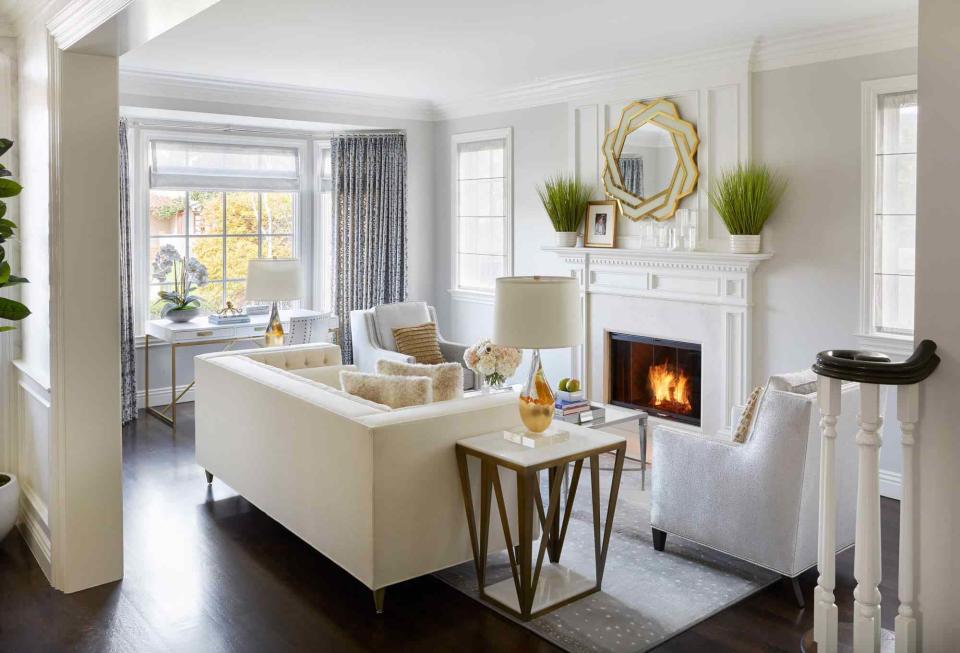
When it comes to decorating, size matters; the design decisions that make sense in your largest rooms don't always work as well in smaller spaces. Keeping a small space cozy and chic—instead of chaotic and cluttered—means considering a variety of factors and how they work together: the size of your furniture and its placement within the room, sconces and ceiling lights, mirrors and vertical storage, paint colors and textured wallpaper.
Striking the right balance requires a thoughtful approach to small-space design, which is why we asked eight experts to share their best tips for keeping your home's tiniest footprints functional and stylish.
Related: 50 Small Space Kitchen Ideas From Designers That Will Make Your Space Feel Huge
Using Oversized Furniture
Choosing chairs, sofas, tables, and other pieces that are the right size for your space makes a big difference in how your room feels, say the experts. "Most furniture manufactured today is geared toward larger spaces," says Kevin Kaminski of Kaminski + Pew. "Not understanding the dimensions of the space and the dimensions of the furniture going into that space can result in rooms that feel out of scale. Not only does this affect the balance and feel of the room, but it can also impact the functionality of the space: a sofa blocking a doorway, not being able to fit more than one piece in a space."
The easiest way to avoid this is to get out your trusty tape measure and mark off the future footprint of your furniture before you order it. "If your space is small and dominated by oversized or large furniture the room will feel even smaller," says interior designer Gabrielle Santiago. "When it comes to small rooms, you need to measure for success."
Using Furniture That's Too Small
Understanding the scale of your space also means making sure your furniture isn’t too modest, since a sparse room can end up feeling cold and uncomfortable. "A mistake I see commonly made in a small space, actually, is furniture that's too small for the space," says designer Michelle Zacks. "Maybe the client chose a small sofa so that it wouldn't crowd the space, but in fact, I often think that a slightly bigger sofa is the way to go—it gives the effect of the space being bigger and also offers extra seating."
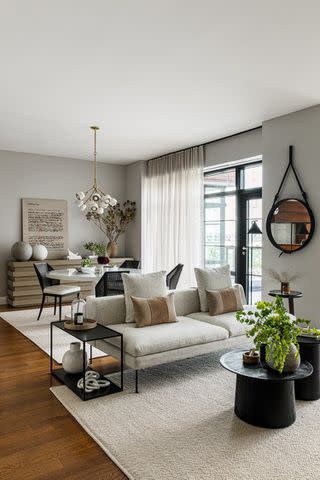
Not Thinking About Furniture Placement
Designers use the idea of circulation to refer to the ways people can move through a space. Especially in a small room, it’s critical to leave pathways that feel easy to navigate. "We recommend leaving 18 inches between a chair or sofa and a coffee table, and 3 feet for walk spaces between furniture pieces," says Amy Mobley of City Hill Design. "Proper scale and walk spaces can easily make a space feel larger than it is!"
Keeping all your furniture pushed against the walls can also impede your room's circulation. "[A mistake is] assuming that pushing furniture to the perimeter makes a small space feel larger," says Jessica Lynn Williams, owner and principal designer of Hendley and Co. "Floating furniture creates a dynamic flow that makes a space feel larger."
Related: 13 Small Living Room Ideas Interior Designers Swear By
Bringing in Clunky, Heavy Pieces
Bringing in dark wood tones, oversized furniture frames, and other heavyweight pieces can distract from the room’s negative space, making it feel smaller. "Stay away from clunky wooden furniture, and consider swapping out bulky nightstands for nesting tables," says Santiago. "If you are transforming a small space into an office space, optimize translucent furniture to help the room appear larger. A glass desk is perfect in this situation because it doesn't overpower, and the transparency allows for energy to feel flowing as opposed to stuck."
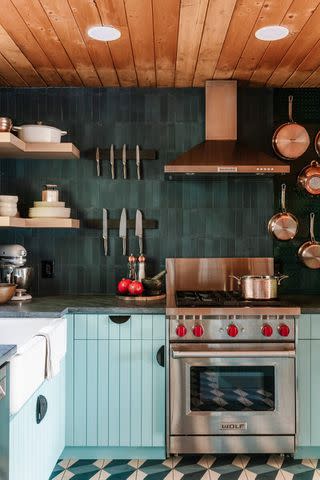
Sam Lund
Forgetting to Edit the Room
While experts recommend keeping rooms of all sizes neat and orderly, this can be especially important in a space with a tiny footprint. "There is one simple rule in a small space, and that is to keep it organized!" says designer Amy Peltier. "When you try to cram in too much stuff and none of it is organized, you'll always feel like you never have enough room. Small spaces can be amazing spaces as long as you edit." If you’re trying to improve a small kitchen, she says, avoid single-use appliances, spare gadgets, and extra utensils. "Think of items that can be multipurpose and really only include items that you use multiple times a week," she says.
Not Utilizing Vertical Storage
Whether you’re creating a tiny craft room, jewel-box-sized office, or cozy nursery, using vertical space makes the room feel taller (while helping you keep things tidy). "When I'm dealing with a small space, one of the first things I look for is if there's any unused vertical space available," says Zacks. "Often, people can overlook it, and it's such a great way to add interest and create storage. There's function there, and it also draws the eye upward."
Related: 13 Small Space Storage Ideas That Find a Place for Everything
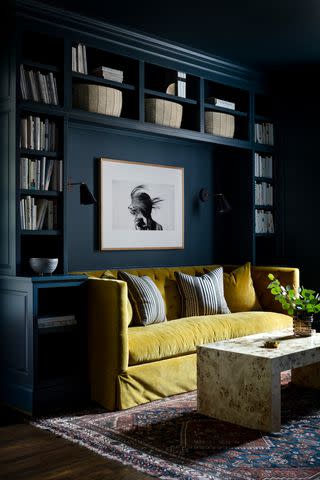
Jennifer Hughes
Only Opting for Light Paint Colors
Old-fashioned design guides may have suggested painting small rooms in shades of white or other pale neutrals, but this can backfire, say the experts. "White walls in a small room just accentuate the size of the room," says Santiago. "Instead, opt for solid textured wallpaper—or paint the walls a color. Don't be afraid of darker paint colors for super small rooms. Lean into the fact that the room is small and amplify the cozy factor by using darker paints."
Alexis Pew of Kaminski + Pew also encourages clients to branch out from dull, light hues. "Most people believe small spaces need a white or light color to make a space feel larger. We find the opposite can be true: dark colors can add depth, atmosphere, and dimension to space," she says. "They are also a great and affordable way to help create an impactful space."
To get the most out of your chosen shade, Williams recommends extending your paint landscape beyond the walls. "Painting a small space—including the ceiling—in a color can expand a room visually and make it feel brighter," she says.
And while designers sometimes recommend easing into a bold color by painting just one wall, this isn't the best approach for a small room, says Victoria McKenney of Enviable Designs. "Adding an accent wall color to a room can make it seem smaller," she says. "It’s better to paint the room all one color to help expand the visual perimeter of the walls, even if using one dark color!"
Related: How to Pick a Paint Color the Right Way
Using Too Many Patterns
Using a patterned wallpaper can allow a small space to make a big impact, says Zacks. "I think color and pattern can add a lot of depth and dimension to small spaces," she says. "It can give the feeling of being transported somewhere, of turning it into a special moment."
However, bringing too many hues, prints, and textures into a small space can make the room feel visually chaotic instead of cohesive. "It is so important to edit when designing a small space; otherwise, it will become too overwhelming," says McKenney. "In a small room, it’s wonderful to add texture through flooring, textiles, and lighting, but keeping it with one color palette is the key."
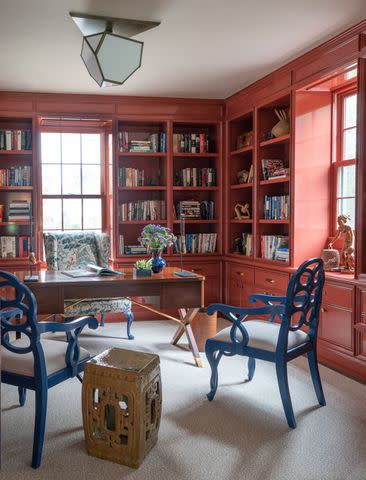
Incorrectly Lighting the Space
Correctly lighting a small space means considering the scale of your fixtures, the brightness levels, and your natural light—and when you get it right, it can alter the whole atmosphere. "Lighting has the ability to completely change the way a space feels," says Santiago.
In a small space, Santiago recommends trading table lamps for sconces, which allows you to keep surfaces clear. "If you are unable to have an electrician install sconces, you can purchase plug-in ones and use paintable TV cord covers to hide the wires and blend in with your walls," she says. "This will help keep the clutter to a minimum and will aid in the feeling of space."
Mobley works with her clients to choose semi-flush or flush mount lighting that allows plenty of clearance for walking underneath. "One of the biggest mistakes people make in small spaces is choosing lighting fixtures that are not the appropriate size," she says. "If you have 8-foot ceilings and no island or dining table underneath, the clearance under a light fixture should be 7 feet. Be careful not to overpower a room with the wrong scale light."
Kaminski suggests another essential lighting trick: Using mirrors and glass. "Light is important in any space, but it’s especially important in a small space," he says. "Not incorporating a mirror or reflective surfaces is a misstep. Not only does a mirror help bounce light, it also helps make a space feel more expansive."
Related: 3 Types of Home Lighting and How to Layer Them to Create a Beautiful and Functional Room
Read the original article on Martha Stewart.

